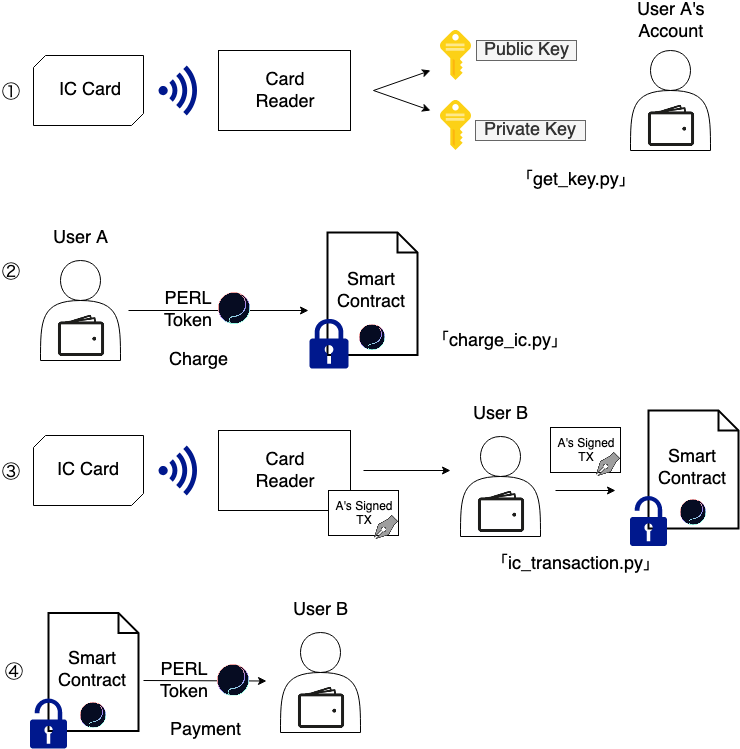cryptoNFC provides crypto-backed NFC charge and payments. It uses the
decentralized Wavelet network to send
PERL tokens from user to user.
- Rust set up to build Wavelet smart contracts; follow the tutorial
- Python3 with additional libraries:
As the owner of the IC card, run python3 client/get_key.py, and use this
credential to log into the Wavelet testnet.
In contract/transfer-nfc/, run:
cargo build --release --target wasm32-unknown-unknown
and upload the transfer-nfc.wasm file to the smart contract
uploader.
As the party who wants to receive tokens, run:
$ export SERIAL_DEVICE=[path to the serial device of the NFC reader]
$ export CONTRACT_ID=[the ID of the smart contract]
$ export RECIPIENT_ID=[the ID of the recipient of the tokens]
$ python3 client/cryptoNFC.py [number of microPERLs to send]
Then, tap the user's IC card to the IC reader.
By sending tokens to a smart contract associated with an IC card, a user can effectively charge their IC card, and remit those tokens to another party using an IC card reader.
We use the UID of a ISO/IEC 14443
A/MIFARE card to generate a unique
identity for a user in the Wavelet network, which they can use to log in and
upload a smart contract which can authorize
token to be sent to a third party. By sending tokens to the smart contract via
the charge_ic function of the smart contract, the user can providing another
party with the contract ID and UID, the user can authorize that party to deduct
some tokens using the ic_transaction function of the same contract.
- Eli Wenig
<eli@neukind.jp> - Norika Kizawa
<summer970827@gmail.com>
